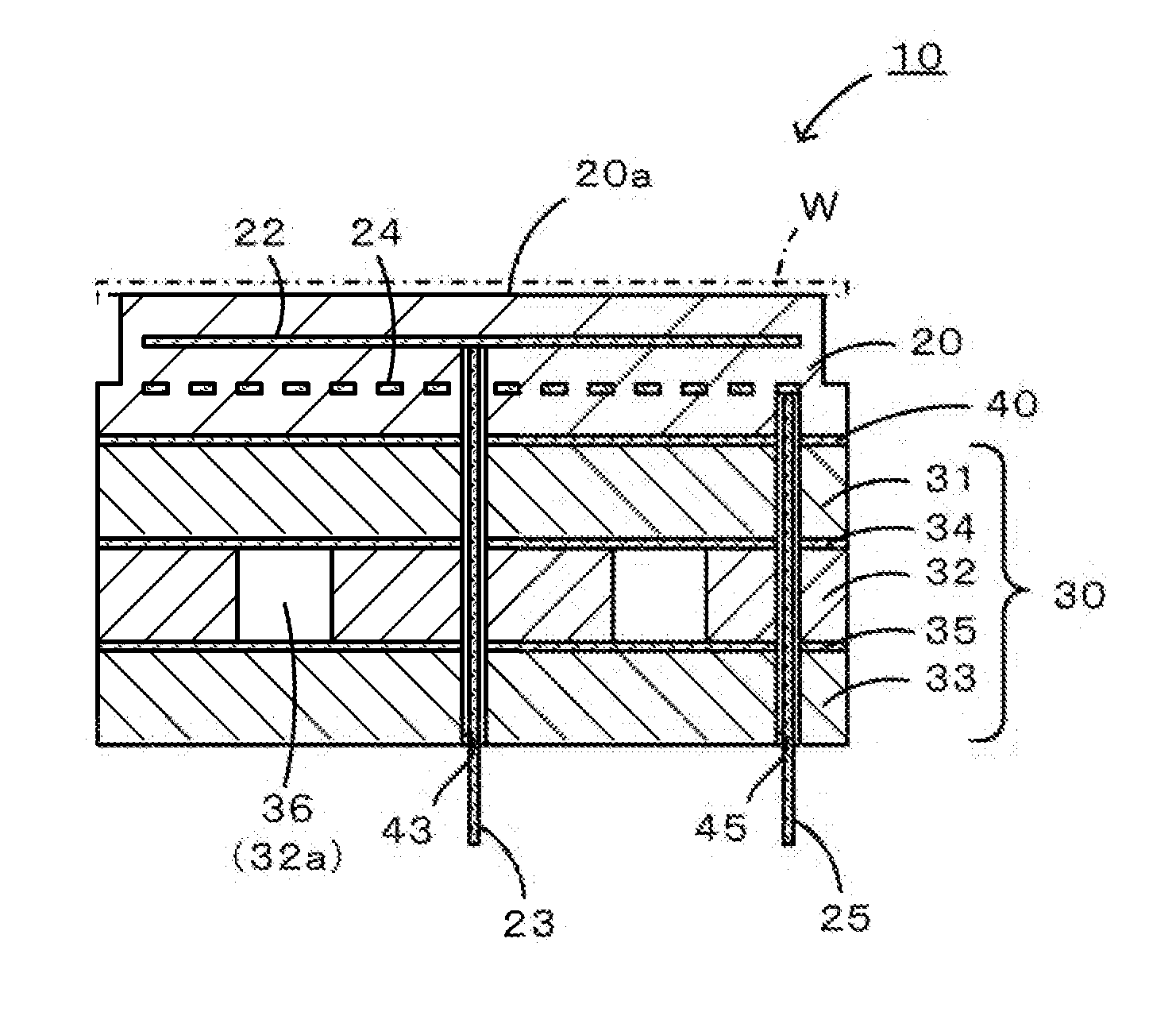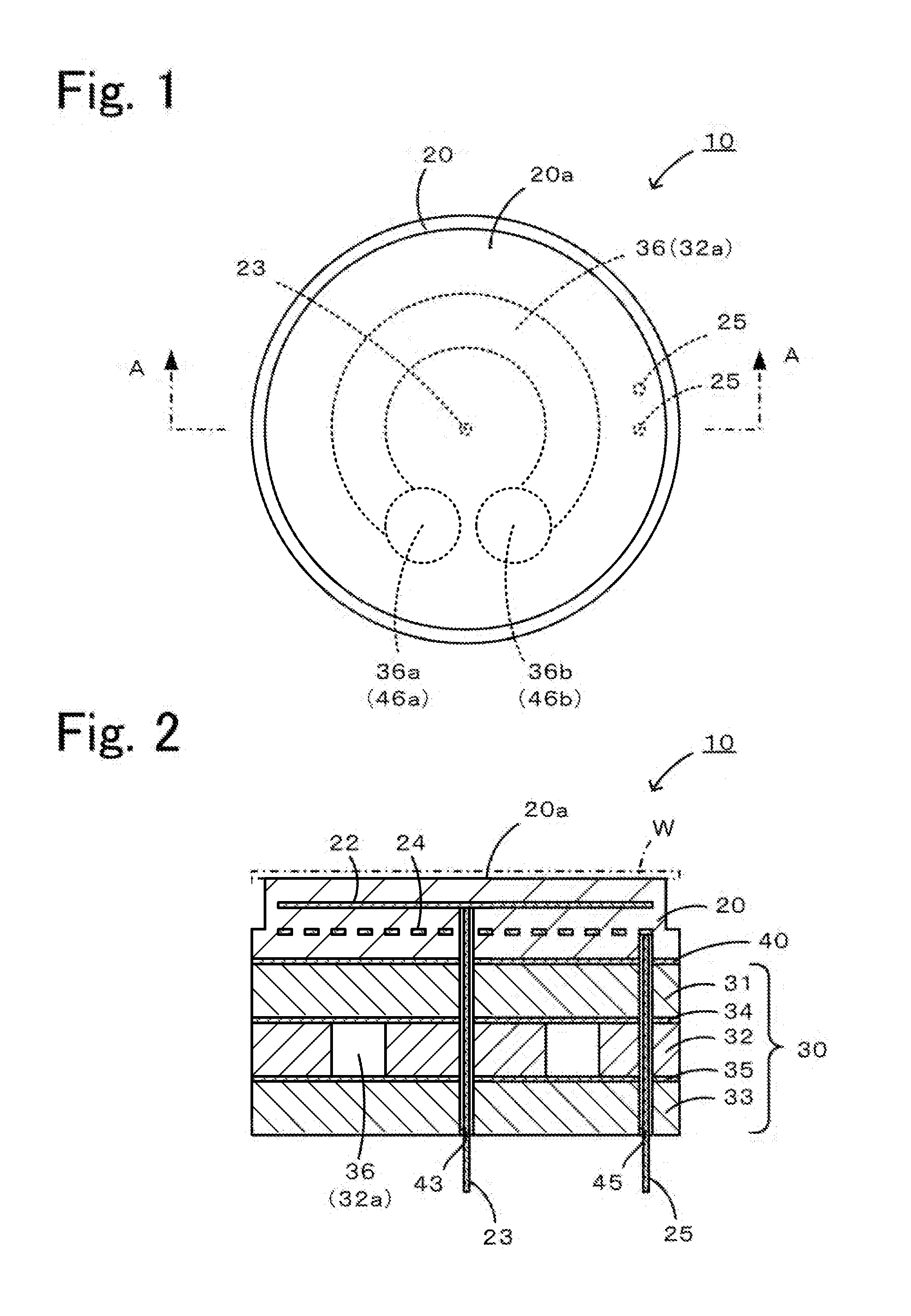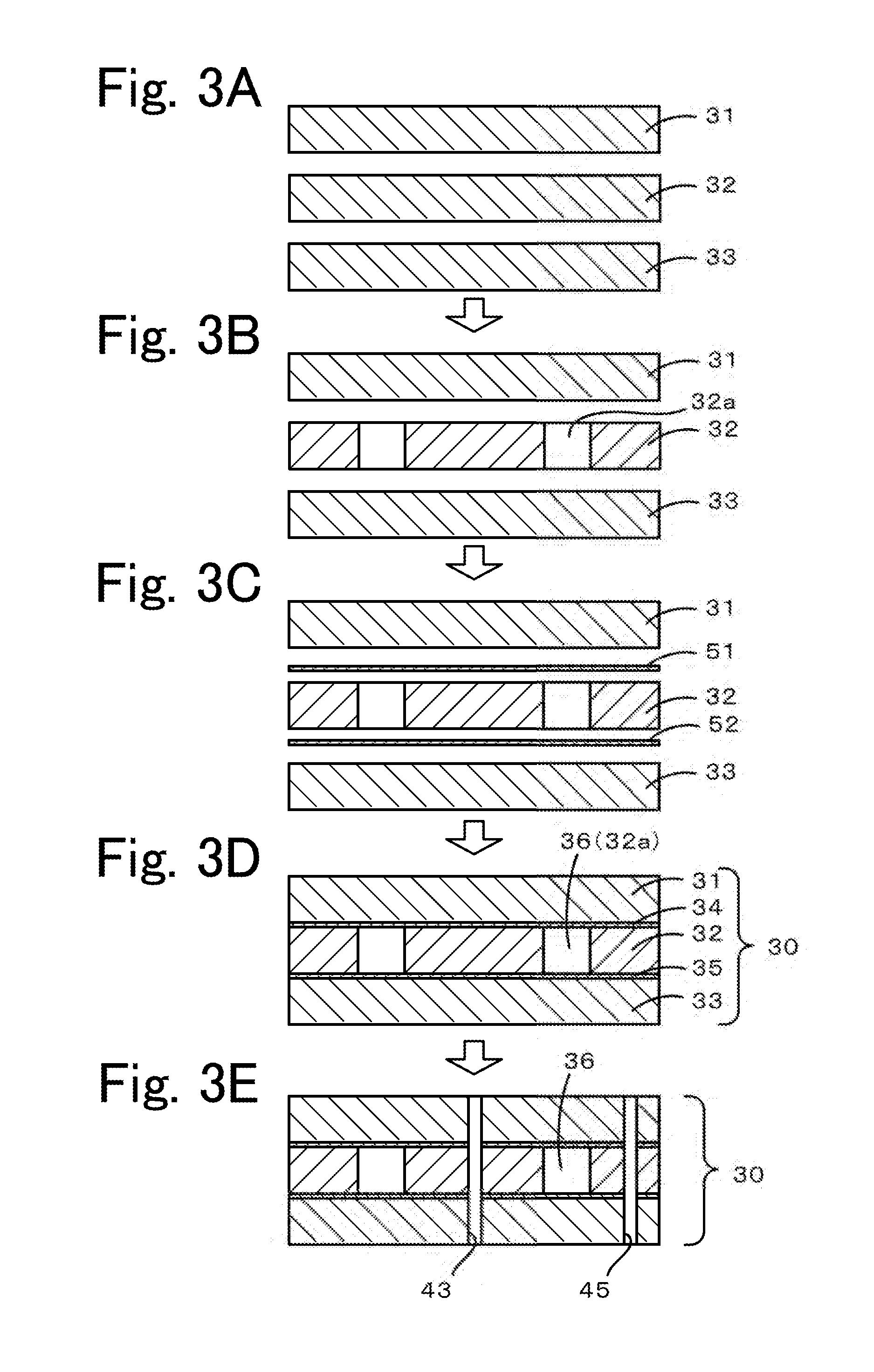Cooling plate, method for manufacturing the same, and member for semiconductor manufacturing apparatus
a semiconductor manufacturing and cooling plate technology, applied in the direction of manufacturing tools, soldering devices, lightening and heating devices, etc., can solve the problems of low heat dissipation ability of resins, easy decomposition, and easy deterioration, and achieve low cooling performance, easy manufacturing, and easy bonded together
- Summary
- Abstract
- Description
- Claims
- Application Information
AI Technical Summary
Benefits of technology
Problems solved by technology
Method used
Image
Examples
first embodiment
Member for Semiconductor Manufacturing Apparatus—First Embodiment
[0046]A member 10 for a semiconductor manufacturing apparatus according to a first embodiment will be described below. FIG. 1 is a plan view of the member 10 for a semiconductor manufacturing apparatus, and FIG. 2 is a cross-sectional view taken along the line A-A of FIG. 1.
[0047]The member 10 for a semiconductor manufacturing apparatus includes an alumina electrostatic chuck 20 for adsorbing a silicon wafer W to be subjected to plasma processing, a cooling plate 30 formed of a dense composite material having substantially the same linear thermal expansion coefficient as alumina, and a cooling plate-chuck bonding layer 40 for bonding between the electrostatic chuck 20 and the cooling plate 30.
[0048]The electrostatic chuck 20 is a disc-shaped alumina plate having an outer diameter smaller than the outer diameter of the wafer W and includes an electrostatic electrode 22 and a heater electrode 24. The electrostatic electr...
second embodiment
Member for Semiconductor Manufacturing Apparatus—Second Embodiment
[0058]A member 110 for a semiconductor manufacturing apparatus according to a second embodiment will be described below. FIG. 6 is a cross-sectional view of the member 110 for a semiconductor manufacturing apparatus.
[0059]The member 110 for a semiconductor manufacturing apparatus includes an alumina electrostatic chuck 20 for adsorbing a silicon wafer W to be subjected to plasma processing, a cooling plate 130 formed of a dense composite material having substantially the same linear thermal expansion coefficient as alumina, and a cooling plate-chuck bonding layer 40 for bonding between the cooling plate 130 and the electrostatic chuck 20.
[0060]The electrostatic chuck 20 is the same as in the first embodiment, has the same reference numerals as in the first embodiment, and will not be further described. The cooling plate 130 is a disc-shaped plate having an outer diameter slightly greater than or equal to the outer dia...
examples
Member for Semiconductor Manufacturing Apparatus
[0076]An electrostatic chuck 20 of a member 10 for a semiconductor manufacturing apparatus according to an example was made of alumina, was of Coulomb type, had a diameter of 297 mm, a thickness of 5 mm, and a dielectric film thickness (a thickness from an electrostatic electrode 22 to a wafer mounting face 20a) of 0.35 mm, and included a heater electrode 24 formed of a Nb coil. A cooling plate 30 was manufactured by TCB of first to third substrates 31 to 33 formed of a dense material described below in an experimental example 10 using an Al—Si—Mg bonding material (containing 88.5% by weight Al, 10% by weight Si, and 1.5% by weight Mg and having a solidus temperature of approximately 560° C.). In the TCB, the substrates were pressurized at a pressure of 1.5 kg / mm2 in a vacuum atmosphere at a temperature in the range of 540° C. to 560° C. for 5 hours. The cooling plate 30 had a diameter of 340 mm and a thickness of 32 mm. The electrosta...
PUM
| Property | Measurement | Unit |
|---|---|---|
| temperature | aaaaa | aaaaa |
| bending strength | aaaaa | aaaaa |
| length | aaaaa | aaaaa |
Abstract
Description
Claims
Application Information
 Login to View More
Login to View More - R&D
- Intellectual Property
- Life Sciences
- Materials
- Tech Scout
- Unparalleled Data Quality
- Higher Quality Content
- 60% Fewer Hallucinations
Browse by: Latest US Patents, China's latest patents, Technical Efficacy Thesaurus, Application Domain, Technology Topic, Popular Technical Reports.
© 2025 PatSnap. All rights reserved.Legal|Privacy policy|Modern Slavery Act Transparency Statement|Sitemap|About US| Contact US: help@patsnap.com



